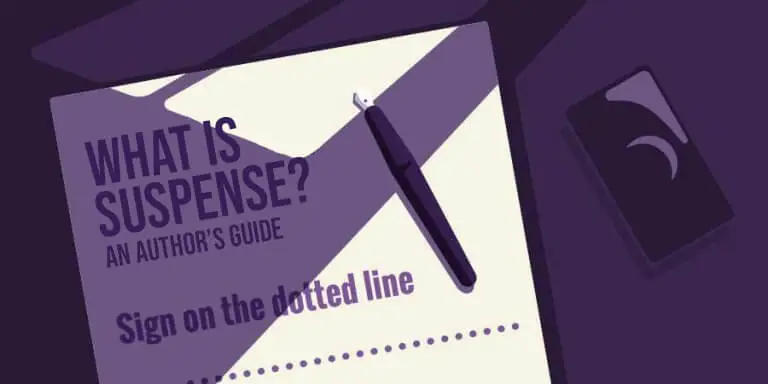
JAKARTA, inca.ac.id – Alright, let’s get right into it—Suspense: Crafting Tension and Excitement in Literature. If you ask me, nothing keeps readers flipping those pages like a well-placed “oh-no-what’s-gonna-happen-now” moment. I’ve been obsessed with that heart-pounding, sweaty-palms feeling ever since I read my first mystery novel under the blanket—flashlight in hand—because yeah, mom said lights out at 9.
Why Suspense Matters More Than You Think

Let’s face it—stories without suspense are, well, kinda meh. Ever watched a movie or read a book where you could predict every single move? Boring, right? Suspense is the secret sauce that keeps people hooked from intro to epilogue. It’s what makes readers whisper, “Just one more page…” and, next thing you know, it’s 3 AM.
From thrillers to romance (yes, even romance!), suspense powers the emotional rollercoaster. In my own writing, whenever I found myself losing steam, it was usually because there wasn’t enough tension. Lesson learned: If you want people invested, turn up the stakes!
Building Suspense: My Not-So-Secret Formula
Okay, real talk. Building suspense isn’t about stuffing your story with car chases and explosions. It’s about uncertainty, stakes, and the reader’s investment in “what’s next?”.
Back when I was new at this, I used to think, just drop a twist and boom—done! But no. My stories fell flat because I missed the “slow drip” approach. Real suspense, I learned, is about feeding info slowly, like breadcrumbs, and making your reader munch every single one.
- Raise the stakes: Make it personal. If the character fails, what do they lose? I make sure my readers care as much as my characters do.
- Let readers in on a secret: Want your audience squirming? Sometimes, I tell them something the main character doesn’t know. Works every time, trust me!
- Pacing: Short sentences speed things up. Long ones build tension. Play with both. I mess this up sometimes and have to go back fixing it—so no shame in editing!
Common Mistakes When Chasing That Kick of Excitement
I’m not gonna lie, I’ve screwed up a ton in the pursuit of nail-biting tension. Hi, it’s me, the person who killed off half the cast by chapter three (awkward) because I thought chaos equals suspense. It doesn’t. Here’s where I—and so many others—go wrong:
- Too many surprises, not enough buildup: Bombshell after bombshell? Readers get exhausted and start caring less. Build up, tease, and let the suspense marinate.
- Flat characters: If your people aren’t relatable, even the best twists fall flat. Suspense works best when you hook readers emotionally first.
- Predictable outcomes: If they can call the ending by page 10—yikes. Mix things up!
Here’s some ‘Knowledge‘ I wish I had from day one: It’s totally fine to dial back. When I finally started cutting wild subplots and focusing on the core tension, my stories actually started to WORK.
Real Examples of Suspense Done Right (and Wrong)
Let’s break down the classics. Stephen King knows how to build anticipation with tiny clues that make you itch for more. I still geek out about Misery—Kath Bates, anyone?
In Indonesian lit, Eka Kurniawan’s Beauty Is a Wound mixes magical realism with suspense, and it slaps. You never totally get what’s coming, even after you think you’ve figured it all out. That’s the magic.
But hey, not every attempt lands. Once, I locked a protagonist in a room for three chapters—with nothing happening. Oof. Readers checked out fast. No movement = no suspense. Lesson: action, even if it’s just emotional, keeps the suspense ticking.
Tips For Injecting Tension Into Every Scene
If you want to master Suspense: Crafting Tension and Excitement in Literature, here are some battle-tested hacks from my own bumpy road:
- Drop hints, not answers: Give just enough to make ’em curious, but not enough to solve the puzzle.
- Switch perspectives: Let us peek into the villain’s mind or see a disaster coming. It’s a thrill, trust me.
- Use the ticking clock: Deadlines make everyone sweat. Even a metaphorical clock—a promise, a threat—creates pressure.
- Sensory details matter: Write what the character sees, hears, feels. When I started doing this, suddenly readers told me, “I felt like I was right there!” That’s gold.
Myth-Busting: You Don’t Need to Write a Thriller
Now, don’t get it twisted. Suspense isn’t just jump scares or whodunits. Romance, YA, fantasy—every genre benefits from a dash of tension. In my last rom-com, the uncertainty of “Will they or won’t they?” kept readers rooting for the big confession. That’s suspense, baby.
The trick is to keep them guessing, page after page. Craft characters with secrets. Stir in a dose of the unknown. And always, always leave questions hanging—just a little longer than feels comfortable.
Final Thoughts: Make Readers Cling to Every Word
If you take one thing from this, it’s this: Suspense is all about careful, almost sneaky, control. Lead your audience down a path, spring a surprise or two, and watch them grip the book a little tighter.
And hey—don’t fear flopping your first few tries. Some of my most suspenseful stories only happened because I totally bombed the early drafts. Embrace the messy process. That’s where the real story magic hides.
So get out there and give your readers what they crave: a story they can’t put down, heartbeat skipping, breaths held. That’s Suspense: Crafting Tension and Excitement in Literature, done right. Happy writing, ya’ll!
Read also about Catharsis to understand how emotional release in literature, drama, and psychology can lead to personal insight, healing, and a deeper connection with the human experience.
#creative writing #Literature #Storytelling #suspense #Writing Tips







